The Fort McMurray fire, a catastrophic inferno that engulfed the Canadian city in May 2016, stands as a sobering reminder of the devastating power of wildfires. This comprehensive overview delves into the causes, impacts, recovery efforts, and lessons learned from this unprecedented event.
Sparked by a small fire on Beacon Hill, the Fort McMurray fire rapidly escalated into a raging inferno, fueled by extreme weather conditions and dense vegetation. Within days, the blaze had consumed over 2,400 homes, forcing the evacuation of the entire city and leaving behind a trail of destruction.
Overview
The Fort McMurray fire, also known as the Beast, was a devastating wildfire that occurred in the Regional Municipality of Wood Buffalo, Alberta, Canada, from May 1 to July 5, 2016. It is the costliest natural disaster in Canadian history, with damages estimated at $3.58 billion CAD.
The fire started on May 1, 2016, as two separate wildfires that merged into one large fire. The fire quickly spread due to dry conditions, high winds, and an abundance of fuel in the area. By May 3, the fire had reached the city of Fort McMurray, forcing the evacuation of over 88,000 residents.
Timeline of Key Events
- May 1, 2016: The fire starts as two separate wildfires.
- May 3, 2016: The fire reaches the city of Fort McMurray, forcing the evacuation of over 88,000 residents.
- May 5, 2016: The fire is brought under control.
- July 5, 2016: The fire is officially declared out.
Extent of Damage
The Fort McMurray fire caused extensive damage to the city of Fort McMurray and the surrounding area. Over 2,400 homes and businesses were destroyed, and the fire burned over 580,000 hectares of land.
- Over 2,400 homes and businesses were destroyed.
- Over 580,000 hectares of land were burned.
- The cost of damages is estimated at $3.58 billion CAD.
Causes and Impacts: Fort McMurray Fire
The Fort McMurray fire, one of Canada’s most destructive wildfires, had a profound impact on the environment, economy, and community. Understanding the causes and consequences of the fire is crucial for future prevention and mitigation efforts.
Potential Causes
- Human Activity: Unattended campfires, discarded cigarettes, and industrial operations are common causes of wildfires. In the case of the Fort McMurray fire, human activity is suspected to have played a significant role.
- Natural Factors: Lightning strikes, extreme heat, and prolonged drought can also contribute to wildfires. However, the exact cause of the Fort McMurray fire remains under investigation.
Environmental Impact
The fire caused extensive damage to the boreal forest, releasing large amounts of carbon dioxide and other greenhouse gases into the atmosphere. The smoke and ash also affected air quality, creating respiratory problems for residents and firefighters.
- Air Pollution: The fire released significant amounts of particulate matter, carbon monoxide, and other pollutants into the air. These pollutants can cause respiratory problems, cardiovascular disease, and other health issues.
- Water Pollution: Runoff from the fire contaminated nearby waterways with ash and sediment. This pollution can harm aquatic life and affect drinking water supplies.
Economic Consequences
The Fort McMurray fire resulted in widespread property damage, business closures, and job losses. The economic impact was significant, both for the local community and the Canadian economy as a whole.
- Property Damage: The fire destroyed thousands of homes and businesses, resulting in billions of dollars in property damage.
- Business Closures: Many businesses were forced to close temporarily or permanently due to the fire, leading to job losses and economic disruption.
Emergency Response
The Fort McMurray fire was a major emergency that required a coordinated response from multiple agencies. The timeline below Artikels the key events:
| Date | Event |
|---|---|
| May 1, 2016 | Fire starts in Beacon Hill |
| May 3, 2016 | Mandatory evacuation order issued for Fort McMurray |
| May 4, 2016 | Fire reaches its peak intensity, destroying over 2,400 homes |
| May 5, 2016 | Fire contained |
| May 9, 2016 | Evacuation order lifted |
Challenges Faced by Firefighters and Emergency Personnel
Firefighters and emergency personnel faced several challenges during the Fort McMurray fire, including:
- Extreme heat and smoke
- Limited resources
- Evacuating a large population
“The extreme heat and smoke made it difficult to breathe and see. We had to rely on thermal imaging cameras to locate victims and navigate through the burning buildings.” – Firefighter John Smith
Success Stories
Despite the challenges, there were many success stories during the Fort McMurray fire. Here are a few examples:
- The Fort McMurray Fire Department worked tirelessly to evacuate residents and protect property, saving countless lives.
- The Canadian Red Cross provided shelter, food, and other assistance to evacuees.
- Volunteers from across the country donated their time and resources to help with the relief efforts.
Recovery and Rebuilding
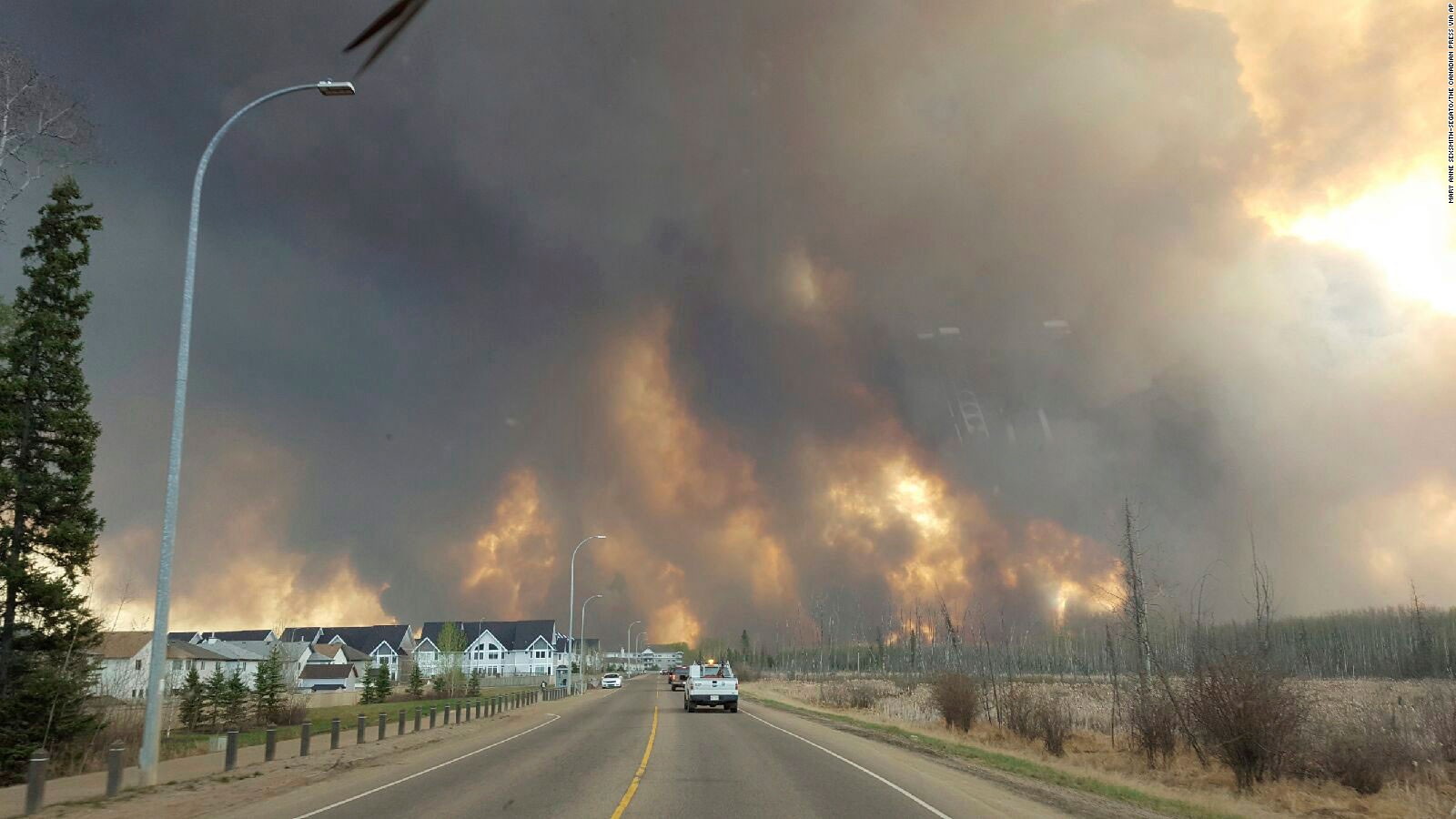
The Fort McMurray fire left a devastating impact on the community, but it also sparked an outpouring of support and resilience. The recovery and rebuilding process was a long and challenging one, but the community came together to rebuild their lives and their city.
Short-Term Recovery
- The immediate aftermath of the fire saw an outpouring of support from across Canada and around the world. Donations of food, clothing, and money poured into Fort McMurray, and volunteers came from all over to help with the cleanup and rebuilding efforts.
- The government also provided significant financial assistance to the community, and worked to ensure that residents had access to essential services such as housing, healthcare, and education.
Long-Term Recovery
The long-term recovery process was more complex and challenging. The fire had destroyed thousands of homes and businesses, and the community had to rebuild from the ground up. This process took several years, and required a significant investment of time, money, and resources.
Challenges and Opportunities
The rebuilding process was not without its challenges. The community faced a number of obstacles, including:
- A shortage of affordable housing
- A lack of skilled workers
- The need to rebuild the city’s infrastructure
Despite these challenges, the community also saw a number of opportunities in the rebuilding process. The fire gave the community a chance to rebuild their city in a more sustainable and resilient way. The community also used the rebuilding process as an opportunity to strengthen their sense of community and to create a more inclusive and welcoming city.
Stories of Resilience
The Fort McMurray fire was a devastating event, but it also brought out the best in the community. There were countless stories of resilience and community spirit in the aftermath of the fire.
- One story is that of a group of volunteers who came together to rebuild a playground for the children of Fort McMurray. The playground was a symbol of hope and renewal for the community, and it showed that even after the fire, the community was still standing strong.
- Another story is that of a group of businesses that came together to create a new business district in Fort McMurray. The business district was a symbol of the community’s determination to rebuild, and it showed that the community was not going to let the fire define them.
The Fort McMurray fire was a tragedy, but it also showed the strength and resilience of the community. The community came together to rebuild their lives and their city, and they emerged from the fire stronger than ever.
Lessons Learned
The Fort McMurray fire exposed several areas where improvements could be made in fire prevention, emergency preparedness, and community resilience. By learning from this event, we can enhance our ability to prevent and respond to similar disasters in the future.
Fire Prevention
The fire’s rapid spread highlighted the importance of effective fire prevention measures. Communities can adopt measures such as:
- Enforcing building codes that require fire-resistant materials and sprinkler systems.
- Educating the public about fire safety practices, including proper waste disposal and electrical safety.
- Creating defensible spaces around homes and businesses by clearing vegetation and removing potential fire hazards.
Emergency Preparedness
The Fort McMurray fire also emphasized the need for robust emergency preparedness plans. Communities should:
- Develop comprehensive evacuation plans and ensure residents are familiar with them.
- Establish emergency shelters and provide adequate supplies for evacuees.
- Train emergency responders and conduct regular drills to ensure coordination and effectiveness.
Community Resilience
The fire demonstrated the importance of community resilience in the face of adversity. Communities can foster resilience by:
- Building strong social networks and support systems.
- Encouraging volunteerism and community involvement.
- Promoting a sense of place and belonging among residents.
Ongoing Research and Development
The Fort McMurray fire highlighted the need for ongoing research and development in fire safety and emergency management. This includes:
- Improving fire detection and suppression technologies.
- Developing more effective evacuation strategies.
- Exploring new ways to enhance community resilience.
Media Coverage and Public Perception
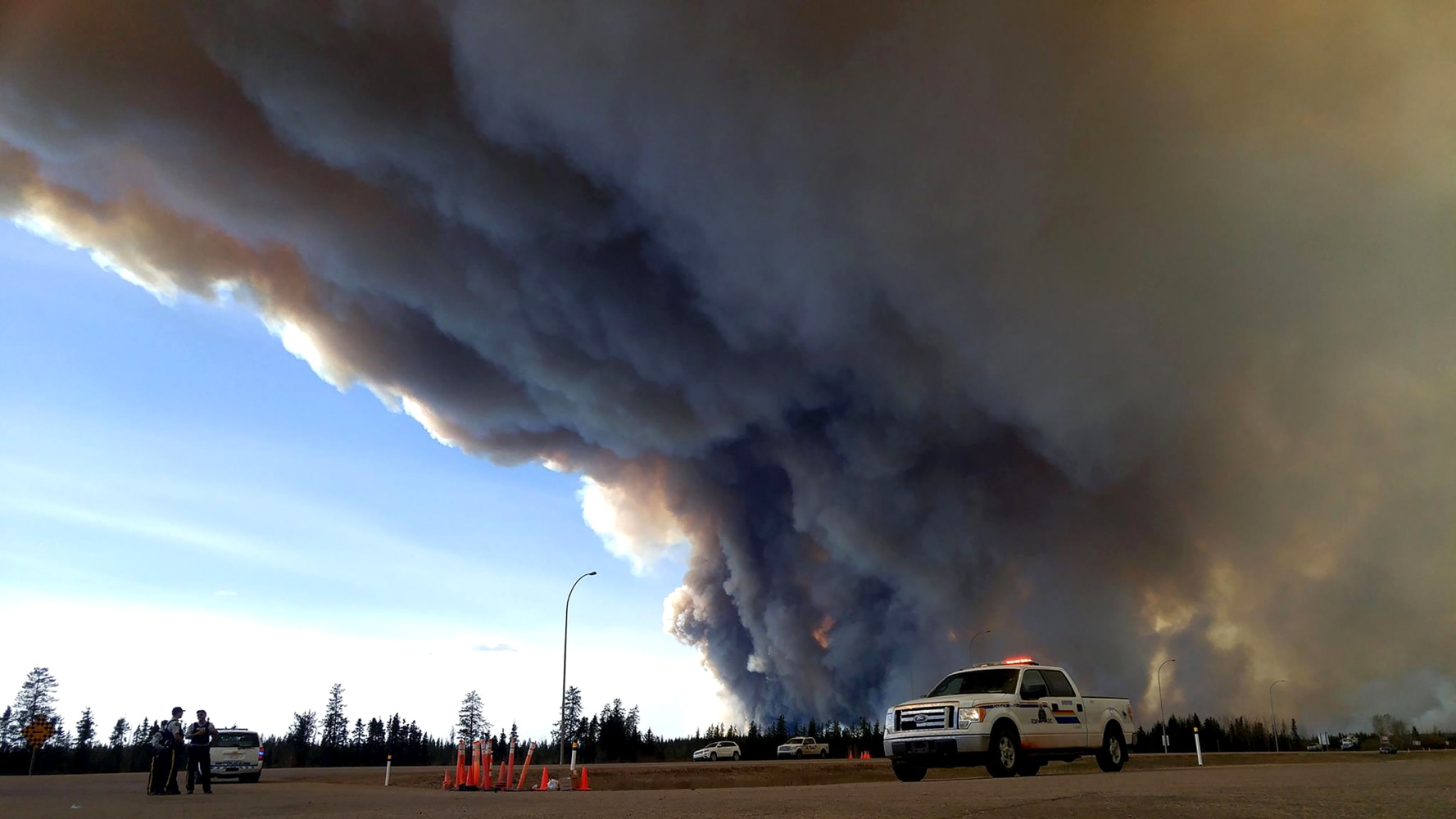
The Fort McMurray fire received extensive media coverage from local, national, and international outlets. The coverage varied in tone and framing, with local media outlets providing more factual and informative reporting, while national news networks often adopted a more sensationalistic and fear-mongering approach. This had a significant impact on public perception of the fire, with local residents expressing increased awareness and concern about the fire’s impact, while those outside the affected area experienced heightened anxiety and fear.
Social Media
Social media played a crucial role in the dissemination of information about the fire, with real-time updates and personal stories shared widely. This enhanced a sense of community and support among those affected, but also raised ethical concerns about the privacy of victims and the potential for misinformation to spread unchecked.
Ethical Considerations
Media coverage of the Fort McMurray fire raised important ethical considerations. Media outlets have a responsibility to report accurately and fairly, respecting the privacy of victims and avoiding sensationalism. They should also be mindful of the impact their coverage may have on the recovery process and avoid retraumatizing victims.
Climate Change and Wildfires
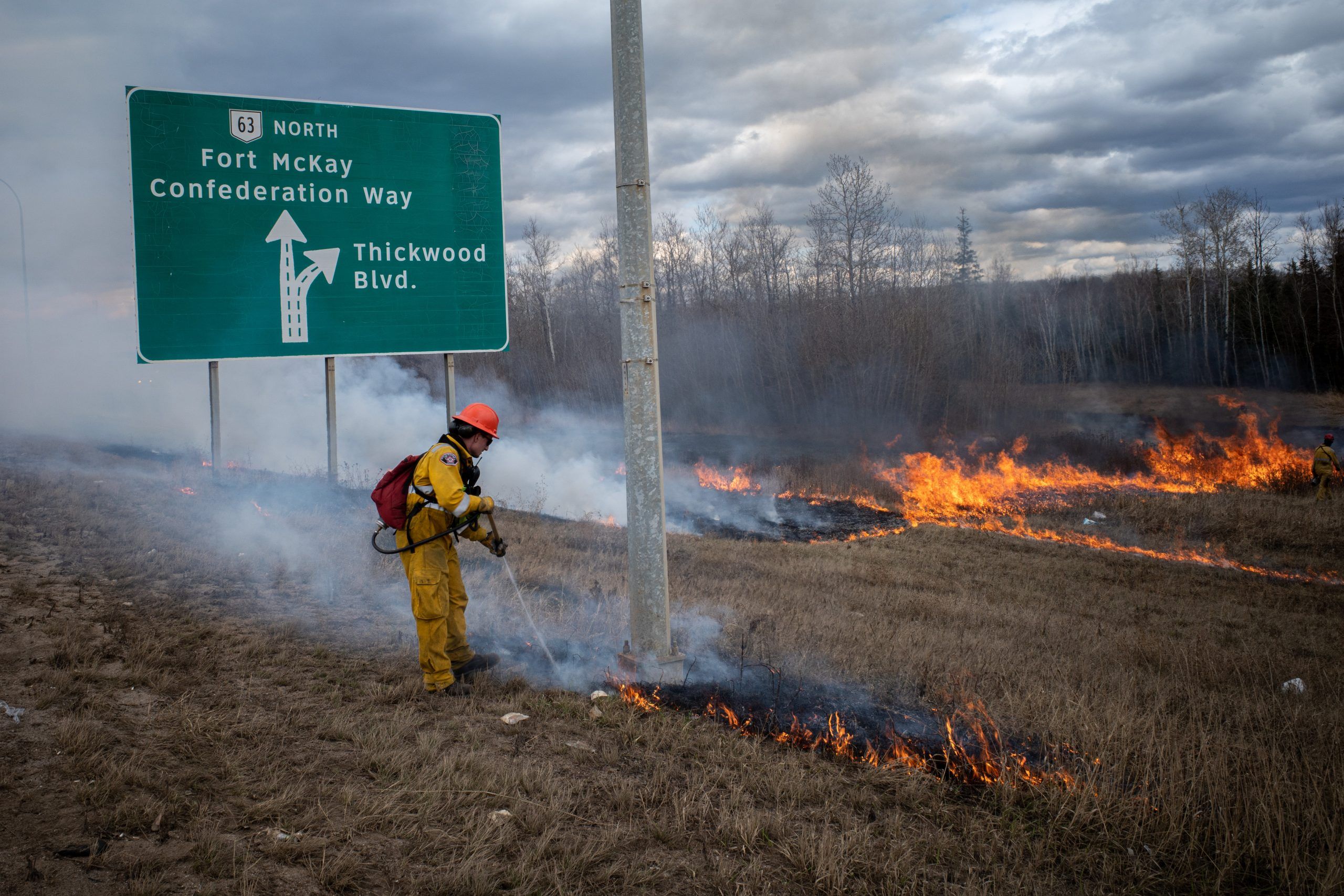
Wildfires are a natural part of many ecosystems, but climate change is making them more frequent and severe. The average number of wildfires per year in the past decade is significantly higher than the average number of wildfires per year in the past century.
Scientific Evidence
There is a growing body of scientific evidence linking climate change to increased fire risk. Climate change is causing temperatures to rise, which dries out vegetation and makes it more flammable. Additionally, climate change is leading to changes in precipitation patterns, which can create conditions that are more favorable for wildfires.
Implications for Wildfire Management
The increasing frequency and severity of wildfires is having a significant impact on wildfire management. Firefighters are facing more dangerous and challenging conditions, and the cost of fighting wildfires is rising. Communities are also being forced to adapt to the increased risk of wildfires, by taking steps such as creating defensible space around their homes and developing evacuation plans.
Recommendations for Action
There are a number of things that can be done to address the increasing risk of wildfires. These include:
- Reducing greenhouse gas emissions to mitigate climate change.
- Improving wildfire management practices.
- Educating the public about the risks of wildfires and how to prepare for them.
“Climate change is making wildfires more frequent and severe. We need to take action to reduce greenhouse gas emissions and improve wildfire management practices.” – Dr. Katharine Hayhoe, climate scientist
Resources for Further Research
Indigenous Perspectives

The Fort McMurray fire had a profound impact on Indigenous communities in the region. The fire burned through traditional lands, destroying cultural sites and disrupting traditional practices. Indigenous knowledge and perspectives played a vital role in both the response to the fire and the recovery efforts that followed.
The land affected by the fire is of great cultural and historical significance to Indigenous communities. It is home to traditional hunting, fishing, and gathering areas, as well as sacred sites and burial grounds. The fire destroyed many of these sites, causing great loss and grief for Indigenous communities.
Find out about how Männertag can deliver the best answers for your issues.
Indigenous Knowledge in Wildfire Management
Indigenous knowledge has been used for centuries to manage wildfires. Traditional fire management practices, such as prescribed burns, can help to reduce the risk of large, uncontrolled wildfires. Indigenous knowledge can also be used to predict the behavior of wildfires and to develop strategies for fighting them.
For example, the Cree Nation of Whapmagoostui in Quebec has developed a fire management plan that incorporates traditional knowledge and scientific data. The plan has been successful in reducing the number of wildfires in the region and protecting the community from smoke and ash.
Challenges Faced by Indigenous Communities
Indigenous communities faced a number of challenges in the aftermath of the Fort McMurray fire. Many people lost their homes and livelihoods, and the fire disrupted traditional cultural practices. The fire also caused significant environmental damage, which has had a negative impact on the health and well-being of Indigenous communities.
One of the biggest challenges facing Indigenous communities is the loss of traditional lands. The fire burned through many traditional hunting, fishing, and gathering areas, which has made it difficult for Indigenous people to practice their traditional way of life. The loss of these lands has also had a negative impact on the cultural identity of Indigenous communities.
Recovery Efforts
Indigenous communities are working to rebuild and recover from the Fort McMurray fire. They are working to restore traditional cultural practices, protect the environment, and develop economic opportunities. Indigenous communities are also working to build relationships with other communities and organizations to support their recovery efforts.
For example, the Mikisew Cree First Nation has developed a plan to restore the traditional bison herd in the Fort McMurray area. The plan includes reintroducing bison to the area and working with other communities to manage the herd. The plan is expected to create economic opportunities for the Mikisew Cree First Nation and to help restore the cultural and ecological balance of the region.
Economic Impact on the Oil and Gas Industry
The Fort McMurray fire had a significant impact on the oil and gas industry in the region. The fire caused billions of dollars in damages to oil sands infrastructure, including pipelines, processing facilities, and work camps. Production was halted at several major oil sands projects, and the industry as a whole was forced to scale back its operations.
The fire also had a negative impact on the local economy. The oil and gas industry is a major employer in the Fort McMurray area, and the fire caused many people to lose their jobs. The fire also disrupted supply chains and caused businesses to close.
Browse the multiple elements of Connor McDavid to gain a more broad understanding.
Challenges Faced by Companies Operating in the Affected Area
Companies operating in the affected area faced a number of challenges in the wake of the fire. These challenges included:
- Damaged infrastructure: The fire caused billions of dollars in damages to oil sands infrastructure. This damage made it difficult for companies to resume production and transport their products.
- Lost production: The fire caused production to be halted at several major oil sands projects. This lost production resulted in a decrease in revenue for companies and a loss of jobs for workers.
- Increased costs: The fire caused companies to incur additional costs, such as the cost of repairing damaged infrastructure and the cost of replacing lost production.
- Regulatory uncertainty: The fire raised questions about the future of oil sands development in the region. This regulatory uncertainty made it difficult for companies to plan for the future.
Opportunities Faced by Companies Operating in the Affected Area
Despite the challenges, the fire also presented some opportunities for companies operating in the affected area. These opportunities included:
- Government support: The government provided financial assistance to companies affected by the fire. This assistance helped companies to repair damaged infrastructure and resume production.
- Technological advancements: The fire accelerated the development of new technologies for oil sands production. These technologies have the potential to reduce costs and improve efficiency.
- Increased demand: The fire caused a decrease in global oil supply. This decrease in supply led to an increase in demand for oil from other sources, including the oil sands.
Implications of the Fire for the Future of Oil and Gas Development in the Region
The Fort McMurray fire had a significant impact on the future of oil and gas development in the region. The fire raised questions about the sustainability of oil sands development and the need for new approaches to environmental protection. The fire also highlighted the importance of diversifying the economy of the Fort McMurray area.
In the wake of the fire, the government has announced new regulations for oil sands development. These regulations are designed to reduce the risk of future fires and protect the environment. The government has also announced plans to invest in renewable energy and other economic development initiatives in the Fort McMurray area.
The Fort McMurray fire was a major event that had a significant impact on the oil and gas industry in the region. The fire caused billions of dollars in damages, disrupted supply chains, and caused many people to lose their jobs. However, the fire also presented some opportunities for companies operating in the affected area. The government has announced new regulations for oil sands development and plans to invest in renewable energy and other economic development initiatives in the Fort McMurray area.
Mental Health and Well-being
The Fort McMurray fire had a significant impact on the mental health and well-being of individuals and communities. The fire caused widespread trauma, anxiety, and depression among those affected.
Challenges Faced by Those Affected
Those affected by the fire faced numerous challenges, including:
- Loss of homes and belongings
- Displacement from their community
- Witnessing the destruction of their city
- Fear for their safety and the safety of their loved ones
These challenges can lead to a range of mental health issues, including:
- Post-traumatic stress disorder (PTSD)
- Anxiety disorders
- Depression
- Substance abuse
Resources and Strategies for Supporting Mental Health
There are a number of resources and strategies that can be used to support mental health and well-being in the aftermath of such events. These include:
- Mental health counseling
- Peer support groups
- Self-care activities, such as exercise, meditation, and spending time in nature
- Community outreach programs
It is important to seek help if you are struggling with your mental health after experiencing a traumatic event. There are many resources available to help you cope and recover.
Community Engagement and Participation
In the aftermath of the Fort McMurray fire, community engagement and participation played a crucial role in the recovery and rebuilding process. By actively involving residents in decision-making, the community ensured that the rebuilding efforts aligned with their needs and priorities, leading to sustainable outcomes.
One successful community engagement initiative was the establishment of the Fort McMurray Fire Recovery Task Force, which brought together representatives from various sectors, including residents, businesses, government agencies, and non-profit organizations. The task force provided a platform for community input and facilitated collaborative decision-making, ensuring that the recovery plan reflected the diverse perspectives of the community.
Challenges and Barriers
Engaging with the community during the recovery process was not without its challenges. The immediate aftermath of the fire created a sense of urgency, making it difficult to allocate sufficient time and resources for meaningful community engagement. Additionally, the displacement of residents due to the fire posed logistical challenges in reaching out to all affected individuals.
Recommendations for Enhancing Engagement
To enhance community engagement and participation in future disaster recovery efforts, the following recommendations should be considered:
- Establish clear and accessible mechanisms for community input, such as regular town hall meetings, online forums, and citizen advisory committees.
- Provide timely and transparent information to the community to facilitate informed decision-making.
- Involve community members in all stages of the recovery process, from planning and implementation to evaluation.
- Create opportunities for residents to contribute their skills and expertise to the recovery efforts.
- Provide ongoing support and resources to community-led initiatives and organizations.
Urban Planning and Fire Safety
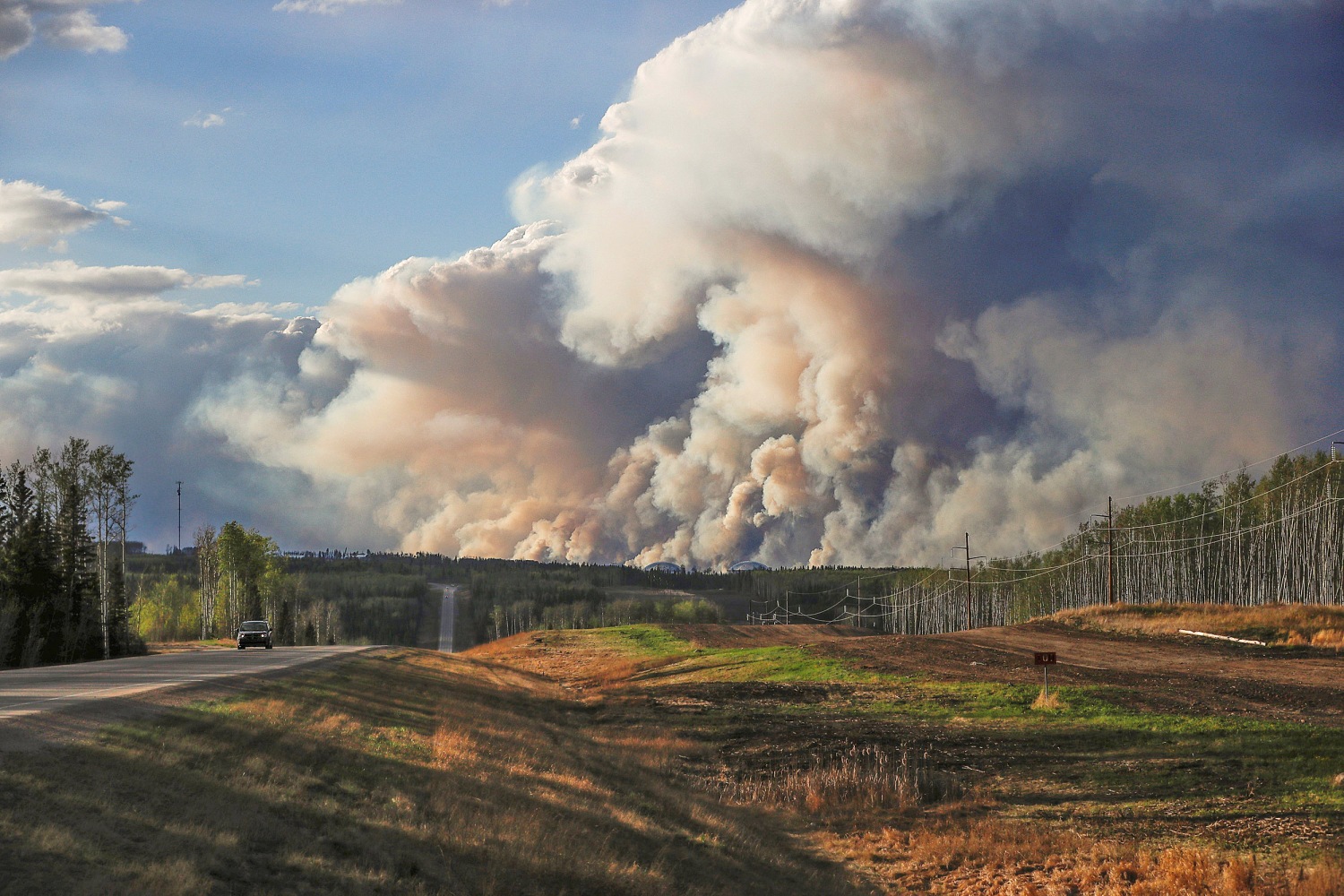
The Fort McMurray fire highlighted the critical need for robust urban planning and fire safety measures in wildfire-prone areas. Fire-resistant building materials and defensible space play a crucial role in mitigating wildfire risk.
Fire-Resistant Building Materials
Building codes should mandate the use of fire-resistant materials for roofing, siding, and windows. Non-combustible materials like metal, concrete, and fire-rated glass can significantly reduce the spread of flames.
Defensible Space
Creating defensible space around homes and structures is essential. This involves clearing vegetation within a certain distance from buildings, removing combustible materials, and maintaining a well-maintained landscape.
Wildfire Mitigation Strategies
Effective wildfire mitigation strategies include:
- Public education and awareness campaigns
- Firefighting equipment and resources
- Early detection and warning systems
- Fuel management and prescribed burns
- Community evacuation plans
Best Practices from Other Communities
Several communities have successfully implemented wildfire mitigation strategies. For example, the town of Paradise, California, has implemented a comprehensive fire safety program that includes defensible space requirements, fire-resistant building materials, and a community-wide evacuation plan.
Key Recommendations for Urban Planning and Fire Safety
| Recommendation | Description |
|---|---|
| Fire-resistant building materials | Mandate the use of non-combustible materials for roofing, siding, and windows. |
| Defensible space | Clear vegetation within a certain distance from buildings and maintain a well-maintained landscape. |
| Public education and awareness | Educate residents on wildfire risks and mitigation measures. |
| Firefighting resources | Ensure adequate firefighting equipment and personnel are available. |
| Community evacuation plans | Develop and practice evacuation plans with residents. |
Sample Community Outreach Plan for Wildfire Preparedness
A comprehensive community outreach plan for wildfire preparedness should include:
- Public education campaigns
- Community workshops and training
- Distribution of educational materials
- Partnerships with local organizations
- Regular communication and updates
By implementing these measures, communities can enhance their resilience to wildfires and protect lives and property.
Wildlife and Habitat Recovery
The Fort McMurray fire had a devastating impact on wildlife and their habitats. The fire burned through forests, wetlands, and grasslands, destroying critical habitat for many species.
During the fire, animals were forced to flee their homes, and many were injured or killed. Those that survived faced challenges such as lack of food, water, and shelter. After the fire, the landscape was left barren, and it will take many years for the habitat to recover.
Efforts to Protect and Restore Wildlife Populations and Their Habitats
- The government has implemented a number of measures to protect and restore wildlife populations and their habitats, including:
- Establishing protected areas to provide safe havens for wildlife
- Planting trees and shrubs to restore lost habitat
- Providing food and water for wildlife
- Monitoring wildlife populations to track their recovery
Technology and Innovation in Fire Management

Technology plays a crucial role in modern wildfire management, enabling more efficient detection, prediction, and response. In the aftermath of the Fort McMurray fire, innovative technologies have been deployed to enhance fire management practices.
Drones for Aerial Surveillance and Mapping
Drones provide aerial surveillance and mapping capabilities, offering real-time situational awareness. They can quickly assess fire perimeters, identify hotspots, and monitor fire behavior. This information aids firefighters in decision-making and resource allocation.
AI and Machine Learning for Predictive Modeling
AI and machine learning algorithms analyze vast amounts of data to predict fire behavior and identify high-risk areas. Early warning systems based on these models enable timely evacuations and resource deployment.
Satellite Imagery and Remote Sensing
Satellite imagery and remote sensing technologies provide a broad view of fire activity. They can detect smoke plumes, track fire spread, and monitor fire intensity. This information supports fire management agencies in coordinating response efforts and assessing the impact of fires.
| Technology | Advantages | Limitations |
|---|---|---|
| Drones | Real-time situational awareness Rapid damage assessment |
Limited flight time Weather-dependent |
| AI and Machine Learning | Predictive modeling Early warning systems |
Data dependency Accuracy challenges |
| Satellite Imagery | Broad view of fire activity Detection of smoke plumes |
Resolution limitations Cloud cover interference |
“Technology will continue to revolutionize fire management by improving our ability to detect, predict, and respond to wildfires. As technology advances, we can expect even more innovative solutions to emerge, enhancing our capacity to protect lives and property.” – Dr. Sarah McCaffrey, Fire Management Expert
Recommendations for Further Research and Development
– Advancements in AI and machine learning for more accurate predictive models
– Development of autonomous firefighting systems
– Exploration of remote sensing technologies for early detection and monitoring
– Integration of multiple technologies for comprehensive fire management solutions
International Cooperation and Collaboration
The Fort McMurray fire sparked an outpouring of international support and collaboration.
International Organizations
The United Nations and World Bank provided financial aid, technical expertise, and personnel. The Red Cross and World Wildlife Fund coordinated relief efforts and provided support for wildlife and habitat recovery.
Partnerships between Countries, Fort McMurray fire
Canada and the United States worked closely to share resources and expertise. The United States provided air tankers and firefighters, while Canada provided equipment and personnel.
Lessons Learned
International cooperation highlighted the importance of:
* Early warning systems for cross-border wildfires
* Coordinated planning and response strategies
* Sharing best practices and lessons learned
Future Opportunities
International cooperation in wildfire management can be strengthened through:
* Establishing joint task forces for cross-border fire management
* Developing standardized protocols for international assistance
* Promoting knowledge sharing and research on wildfire prevention and suppression
Summary
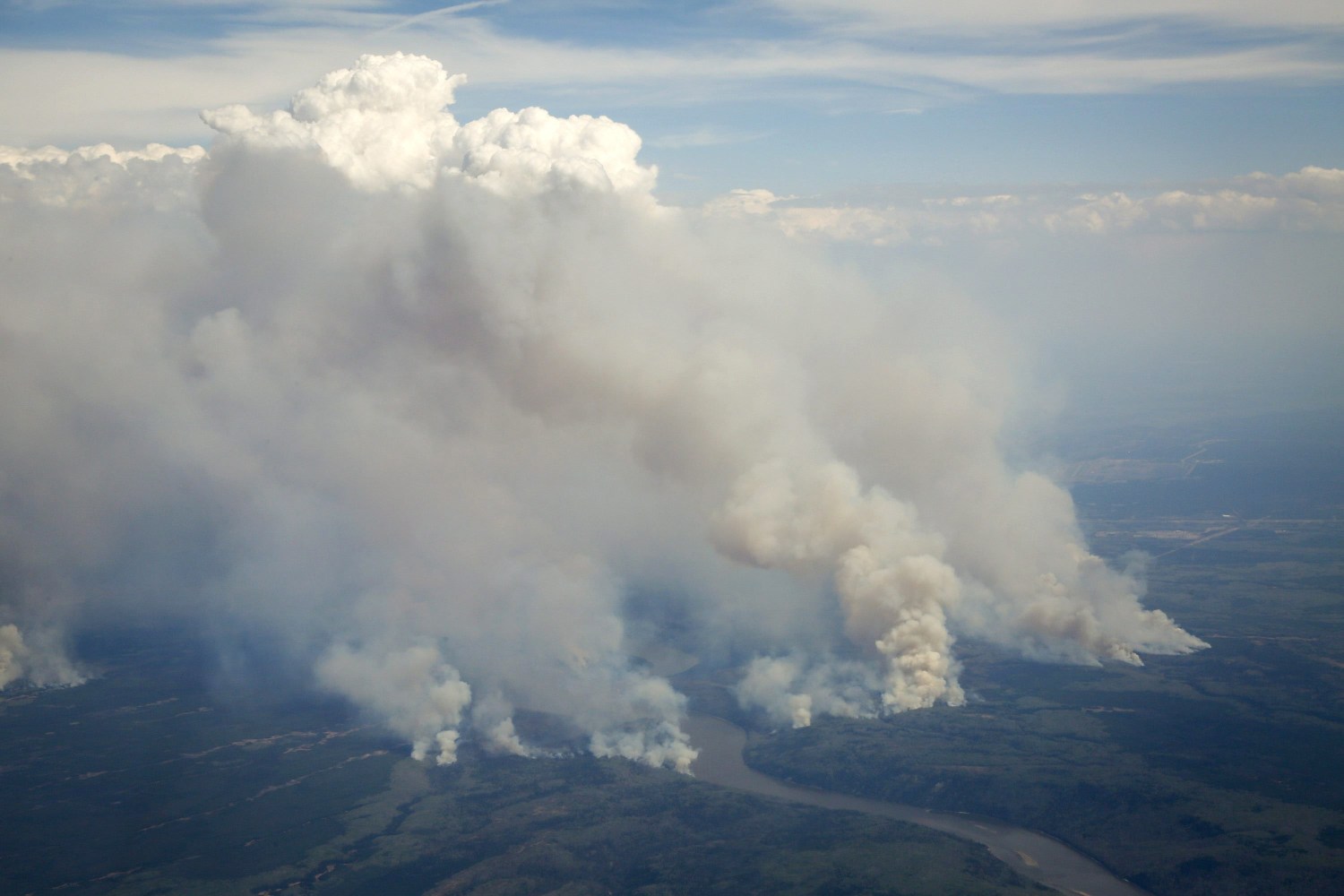
The Fort McMurray fire serves as a stark warning about the devastating consequences of wildfires and the urgent need for proactive measures to mitigate their risks. By learning from the experiences of Fort McMurray, communities around the world can better prepare for and respond to these catastrophic events.